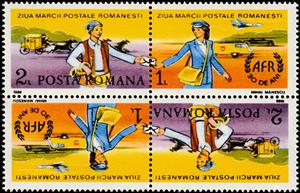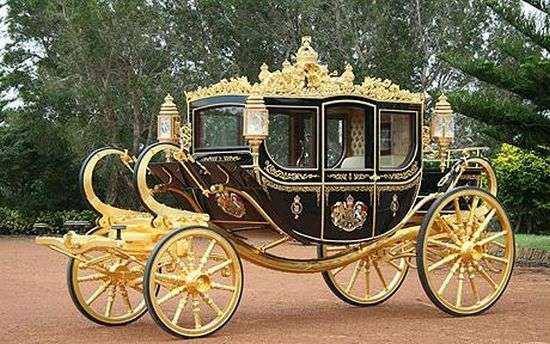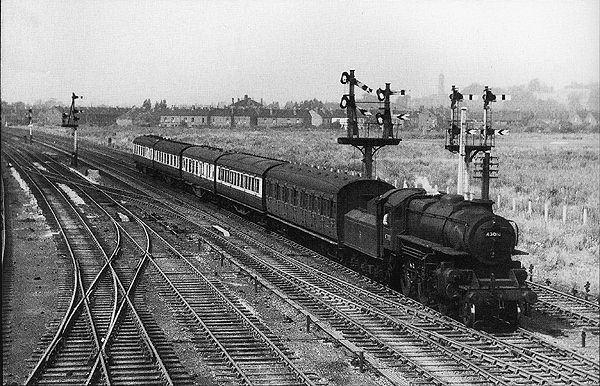Tete-Beche: Stamp Day: Letter Carriers from 19th and 20th Centuries (Romania 1988)
Stamp Day: Letter Carriers from 19th and 20th Centuries (Romania 1988)
13 November (Romania ) within release Stamp Day 1988: Letter Carriers from 19th and 20th Centuries goes into circulation Tete-Beche Stamp Day: Letter Carriers from 19th and 20th Centuries face value 2*(2+1) Romanian leu
| Tete-Beche Stamp Day: Letter Carriers from 19th and 20th Centuries in catalogues | |
|---|---|
| Michel: | Mi: RO 4508KDZf |
| Colnect codes: | Col: RO 1988.11.13-01a |
Tete-Beche is horizontal format.
tête-bêche pair - bottoms adjacentAlso in the issue Stamp Day 1988: Letter Carriers from 19th and 20th Centuries:
- Tete-Beche - Stamp Day: Letter Carriers from 19th and 20th Centuries face value 2*(2+1);
- Tete-Beche - Stamp Day: Letter Carriers from 19th and 20th Centuries face value 2*(2+1);
Tete-Beche Stamp Day: Letter Carriers from 19th and 20th Centuries it reflects the thematic directions:
An aircraft (pl. aircraft) is a vehicle that is able to fly by gaining support from the air. It counters the force of gravity by using either static lift or the dynamic lift of an airfoil, or, in a few cases, direct downward thrust from its engines. Common examples of aircraft include airplanes, rotorcraft (including helicopters), airships (including blimps), gliders, paramotors, and hot air balloons.Part 1 (Definitions and Abbreviations) of Subchapter A of Chapter I of Title 14 of the U. S. Code of Federal Regulations states that aircraft "means a device that is used or intended to be used for flight in the air."
A carriage is a two- or four-wheeled horse-drawn vehicle for passengers. Second-hand private carriages were common public transport, the equivalent of modern cars used as taxis. Carriage suspensions are by leather strapping or, on those made in recent centuries, steel springs. Two-wheeled carriages are usually owner-driven.
The horse (Equus ferus caballus) is one of two extant subspecies of Equus ferus. It is an odd-toed ungulate mammal belonging to the taxonomic family Equidae. The horse has evolved over the past 45 to 55 million years from a small multi-toed creature, Eohippus, into the large, single-toed animal of today. Humans began to domesticate horses around 4000 BC, and their domestication is believed to have been widespread by 3000 BC. Horses in the subspecies caballus are domesticated, although some domesticated populations live in the wild as feral horses. These feral populations are not true wild horses, as this term is used to describe horses that have never been domesticated, such as the endangered Przewalski's horse, a separate subspecies, and the only remaining true wild horse. There is an extensive, specialized vocabulary used to describe equine-related concepts, covering everything from anatomy to life stages, size, colors, markings, breeds, locomotion, and behavior.
Railways - Transportation system made up of metal rails which is designed to allow trains to maneuver on the tracks from one location to the next.
A vehicle (from Latin: vehiculum) is a mobile machine that transports people or cargo. Typical vehicles include wagons, bicycles, motor vehicles (motorcycles, trucks, buses), railed vehicles (trains, trams), watercraft (ships, boats), aircraft and spacecraft. Land vehicles are classified broadly by what is used to apply steering and drive forces against the ground: wheeled, tracked, railed or skied. ISO 3833-1977 is the standard, also internationally used in legislation, for road vehicles types, terms and definitions.





